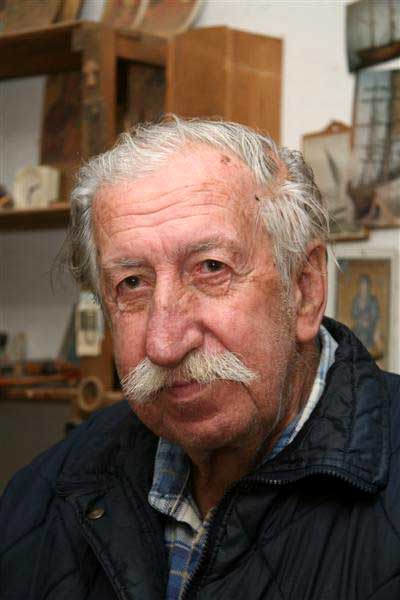
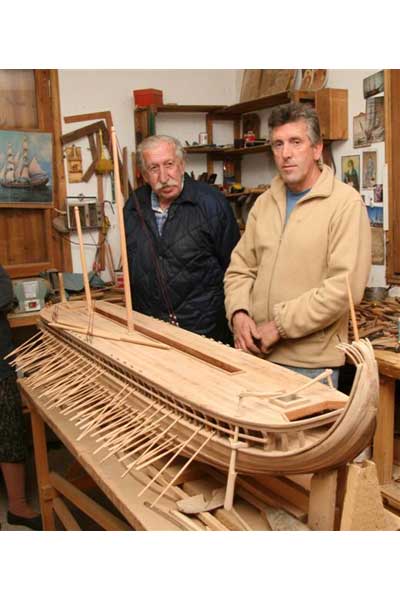
Pic 1: Born in 1927, Triantafilos Boudalas learnt his skills over many years working in the busy shipyards that once dominated the harbour of Skopelos. Now he works from home, creating intricate scale models that sell to collectors for thousands of pounds. Pic 2: Triantafilos and his son-in-law show off this 5ft long model of a trireme, as used by the ancient Greeks. These fast battleships were 120ft long, with three rows of oars, using a total of 170 rowers. There is a main mast and foremast, to which big square sails would have been attached for extra speed. This picture of the stern shows the pair of oars used for steering the boat. Two anchors were positioned at the bow.
Skopelos, in the Northern Sporades, is just how you imagine a Greek island. Picturesque white houses tumble down the hillside to the harbour, where they meet the deep blue of the Aegean Sea. The scene probably hasn’t changed that much in centuries, although it hasn’t always been so quiet here. At one time there would have been constant noise and bustle as hundreds of men worked all day in the busy shipyards, or tarsanadss, building ships and fishing boats using pinewood from the island’s steep forested slopes. Boats have always played a big part in life on Skopelos. With its rainy climate, the land was very fertile and good ships were needed to export the farmers’ produce. In less peaceful times, Skopelos built 35 ships to take part in the fighting against the Ottoman Empire during the 19th century Greek Revolution.
It was against this background that the young Triantafilos Boudalas began work at the island’s shipyard. Born in 1927, as soon as he was old enough he joined his father, building all kinds of vessels, from fishing craft to tall masted sailing ships. He stayed there until the shipyard was closed in the late 1960’s, when it became more economical to make boats from steel and fibreglass. Rather than lose the skills of a lifetime, he then began building wooden model ships, a business which he carries on to this day.
Enjoy more Model Boats Magazine reading in the monthly magazine.
Click here to subscribe & save.
His workshop, in the basement of his family home, is a treasure trove, brimful with tools and lovingly prepared strips of wood. Standing tall amongst the clutter are the proud masts of a perfectly crafted scale model of H.M.S. Victory and nearby are the delicate three tiers of oars flanking a 5-feet long Greek trireme.
The business is very much a family affair. Triantafilos constructs the ships together with his son Yannis, while the sails are sewn by his daughter Nina. He uses wood from the walnut trees which grow abundantly on Skopelos. With its hardness, grain and rich colour, it is considered by many to be one of the best of the modelling woods.
Of course, with all this skill and talent, Triantafilos has gained a reputation as a master of his craft which spans continents. The former President of the United States, George Bush Senior, commissioned a large model of Old Ironsides, the three-masted frigate U.S.S. Constitution, just as she would have looked when launched on 23rd July 1798. A big model such as that could take a year or two to complete, but smaller ones take just weeks or months. Usually about five are completed per year. The prices are high, which is to be expected, and customers can expect to pay several thousand pounds for a ship by Triantafilos.
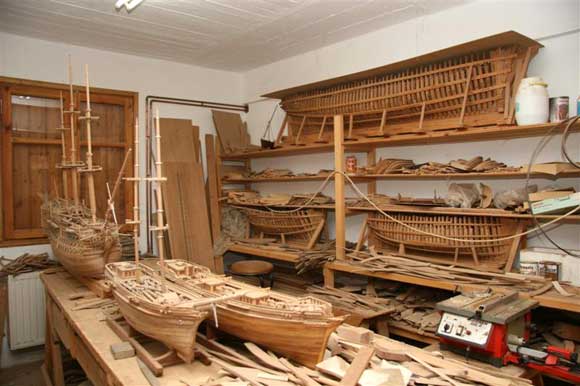
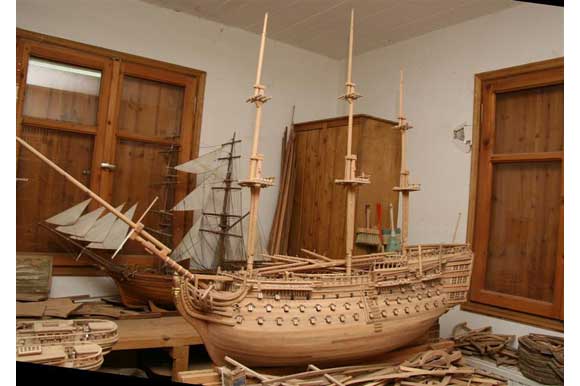
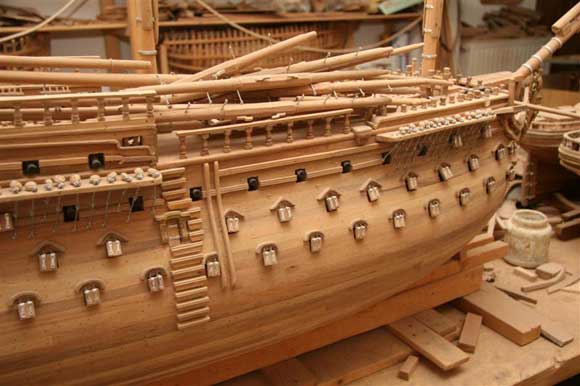
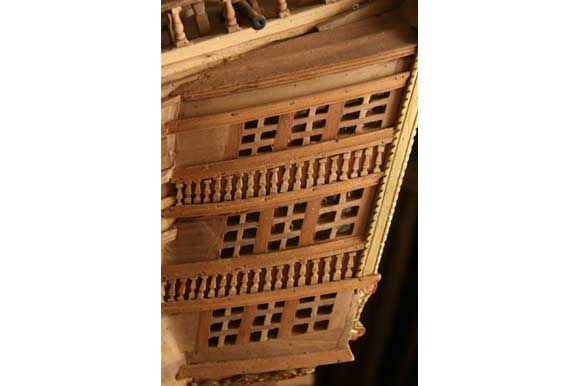
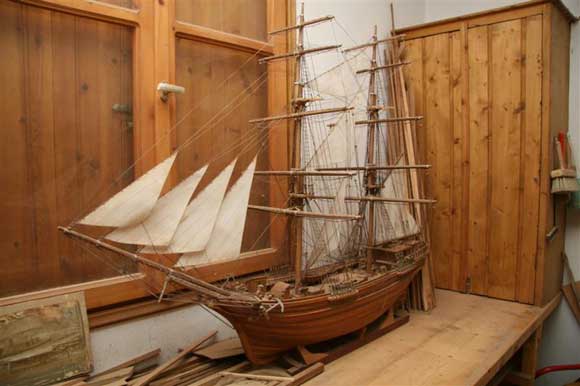
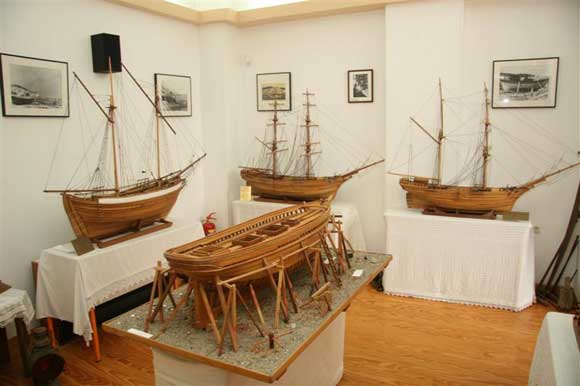
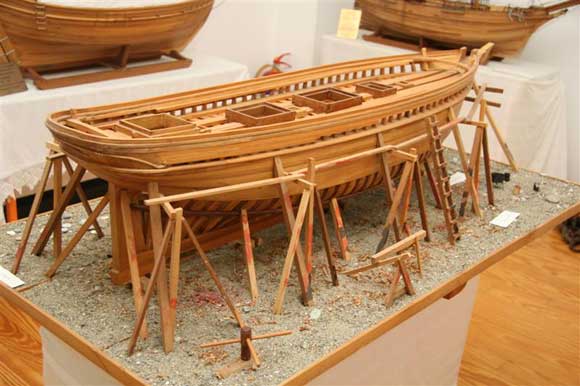
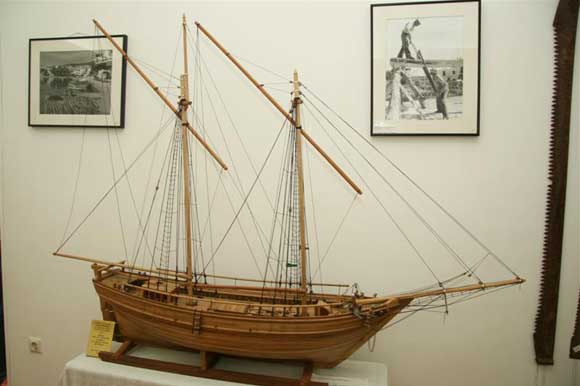
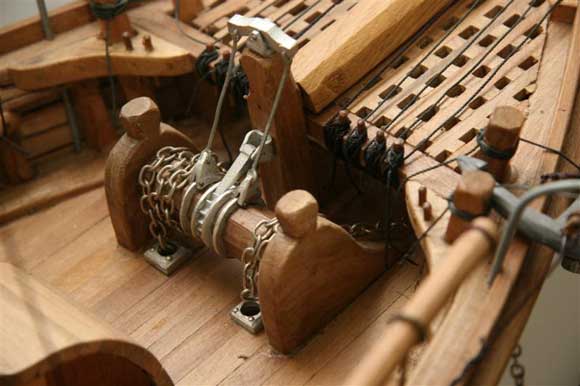
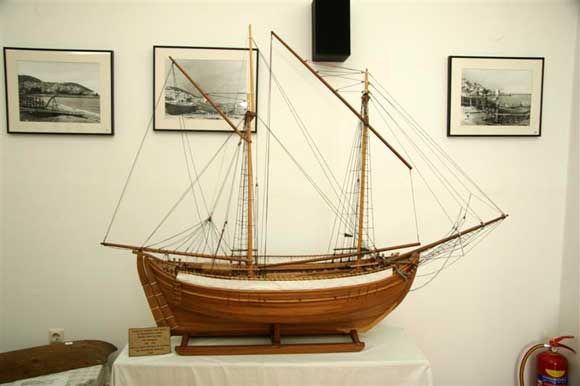
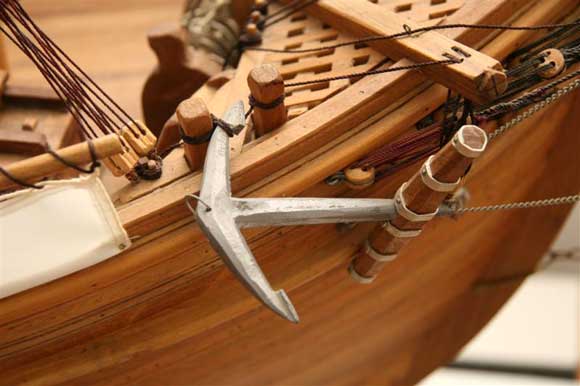
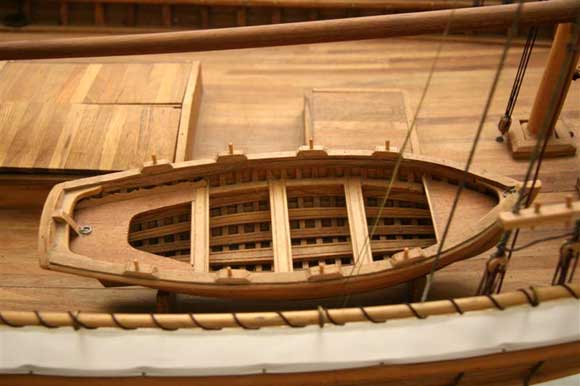
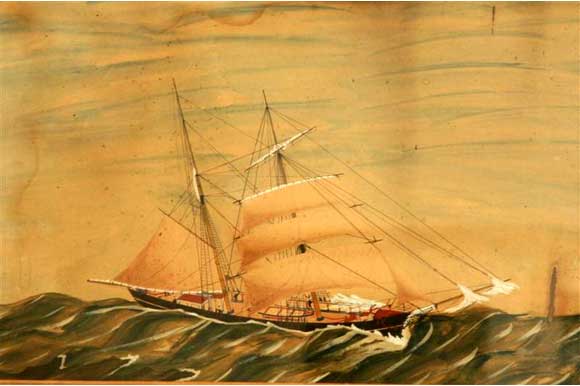
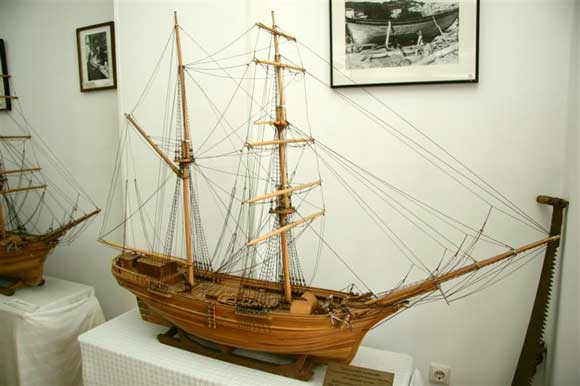
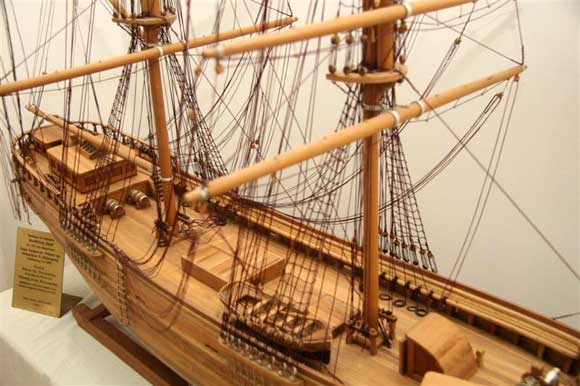
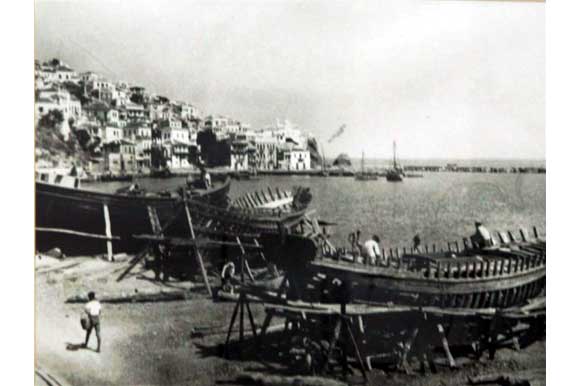
Pic 3: Steps lead down to the small workshop, underneath the family home. Every surface is covered with wood, tools or partly-constructed models. It really is a shipyard in miniature. Pic 4: Dominating the workshop with elegance and grace, is a 4ft 6ins model of H.M.S. Victory, which is near to completion. The yards are made and lie waiting to be fitted to the three masts. Then there will be a lot of sewing to do, as she had 37 sails in total! H.M.S Victory and the Cutty Sark are the two ships for which Triantafilos most often receives commissions. Pic 5: A closer view showing the starboard guns and waterproof gun ports. H.M.S. Victory was armed with 104 guns on three gun decks. Pic 6: Triantafilos has faithfully reproduced the delicate intricacy of Victory’s stern galleries. Pic 7: This model, about 3ft 6ins long, is of a Greek sailing ship. The sails are sewn by Triantafilos’ daughter Nina. Pic 8: Reached through the narrow alleyways of Skopelos town, the Folklore Museum, which was opened in 1992, has this impressive display of ship models, all by Triantafilos Boudalas. Shipbuilding skills are looked on by people of Skopelos as part of their heritage. At one time there were 20 shipbuilders employing men to work for them in the shipyards. Pic 9: In the centre of the display is this model showing a ship’s hull under construction, a reminder of the techniques used in the shipyard. Note the complex support structure for the hull and keel. Pic 10: Donated in memory of the drowned sailors of Skopelos, this is the Greek ship St. Nicholas, as it was in 1915. Triantafilos made this model in 2000. Pic 11: You have to look closely to appreciate the detail, such as the beautifully crafted anchor winch on the St. Nicholas. Pic 12: This model, The Three Brothers, is a light, fast sailing boat, named after its captains in the early 20th century. The model was made in 1997. Pic 13: Again, it’s all in the detail! This is a close-up of the starboard anchor from the Greek ship The Three Brothers. Pic 14: Even the rowing boats are made with perfect precision. Pic 15: The walls of the museum are lined with fascinating paintings and old photographs of the shipbuilding in Skopelos, and amongst them is this watercolour, which inspired Triantafilos to make a model of this ship, named Life-Giving Fountain. The painting is dated 1898. Pic 16: Triantafilos made this model of the Life-Giving Fountain in 1994. The model was donated by the grandson of the Captain, as were the other models on display. Pic 17: There are two models of Life-Giving Fountain. This one, showing the intricate rigging, is in memory of the 172 people of Skopelos who took part in the building of the ship in 1852. Pic 18: Photographs at the museum show men hard at work in the shipyards, or tarsanades. When there was no longer demand for wooden ships, the yard finally closed in 1965. Now the harbour is quiet, and tourism is the island’s main industry. Photo reproduced by kind permission Skopelos Folklore Museum.
If such high prices are not for you, you can admire Triantafilos’ skill for free by visiting the local Folklore Museum, which opened in 1992. Here, amongst the displays of furniture, bric-a-brac and traditional lace and embroideries, is an impressive display of wooden sailing ships, an integral part of the island’s history. All but one are made by Triantafilos, who of course is well known in the town. Surrounded by old photographs of Skopelos in its ship-building days, they are a proud record of the island’s past.
If you do go to Skopelos, you may be lucky enough to meet Triantafilos. If so, I’m sure that you will receive a very warm welcome from him and his family, just as I did, and perhaps a chance to see him putting into practice the skills handed down through the centuries.




